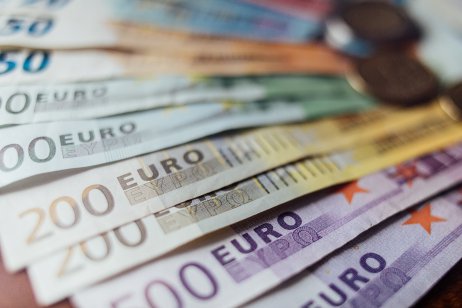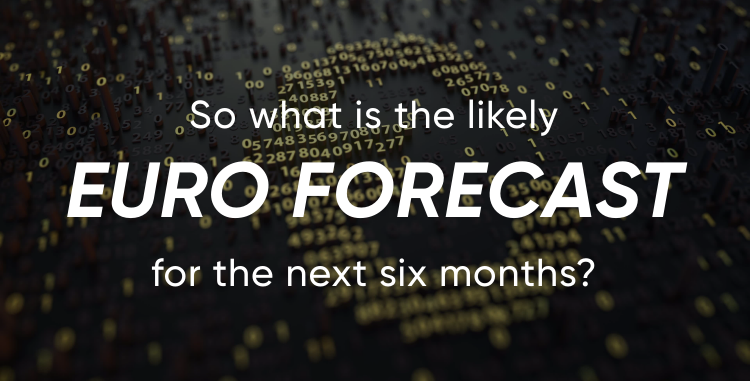Euro forecast for the next 6 months
By Dan Atkinson
13:06, 26 October 2020

Europe’s single currency is 21 this year and, in terms of its dollar value, you could say it has spent two decades going nowhere. Launched in January 1999 at $1.17, the euro is currently worth $1.1847. So those of a more optimistic frame of mind may claim this shows the founders of the currency pitched its worth against the US unit pretty much correctly.
Those founders include some barely remembered figures, such as European Commission president Jacques Santer, German Chancellor Gerhard Schroder, French President Jacques Chirac and the former Dutch finance minister Wim Duisenberg, who served as the first president of the European Central Bank.

Not plain sailing
All have left the stage, but the currency endures, much against the euro predictions over the years. Between the signing of the Maastricht Treaty in 1991 and the currency’s launch eight years later, there were those who insisted it would never happen.
Then there were claims it would fall apart as a result of the 2008 financial crisis, which would see the likes of Greece and Italy leave the eurozone and, possibly, the European Union itself. In the event, they did not, and the currency, initially serving just 10 countries, now circulates in 19 of them.
However, that the currency has survived and is close to its launch value does not mean the past 21 years have been plain sailing. Far from it. Just two years into the euro’s existence, it was hurtling downwards towards parity with the US currency, prompting some hilarity among commentators who recalled the boast in Brussels that the euro would allow the EU “to look the dollar in the eye”.
As finance ministers gathered in Prague for the annual meetings of the International Monetary Fund and World Bank in the autumn of 2000, the Group of Seven leading economies launched a rescue mission, intervening in currency markets to support the single currency. There were suggestions that this was throwing good money after bad, and that dollar parity was inevitable; it was not, proving once again that making a euro currency forecast can be a tricky business.
The question now, as the currency heads towards its 22nd year, is whether the euro rate will go up. What is the euro forecast for the next 6 months? To work that out, it may help to look at where its dollar value has been during the past 12 months, given that dollar/euro is easily the most important currency pair in the world.
A short answer would be that it has enjoyed a steadily rising euro rate trend. One year ago, on October 23, 2019, the euro was worth $1.1131. Its low point for the period was seen on March 19, at $1.0656, and its 12-monthly high was much more recent, at $1.1937 on August 31.
What is your sentiment on EA?
Inconclusive election would hit the dollar
The main influences on its dollar performance during this time have been concerns that the US central bank, the Federal Reserve, is prepared to pump more liquidity into the American economy to kick-start its recovery in the wake of the coronavirus crisis. All things being equal, the more dollars there are in circulation, the less they are worth.
Subsidiary factors weakening the dollar against the euro have included social unrest in US cities and suggestions that President Donald Trump may not accept the result of November’s presidential election if he fails to be returned to office. This last issue is key to any kind of euro forecast for the next 6 months. A convincing victory for either Mr Trump or his Democratic Party challenger Joe Biden would steady the dollar and make less likely any further gains for the euro, while an inconclusive result, possibly resulting in lawsuits and constitutional deadlock, would propel further funds into the single currency.
However, while eurozone politics may lack some of the drama of the US variety, it is not quite as set and stable as is sometimes assumed. Germany’s Chancellor Angela Merkel is on her way out ahead of federal elections between August and October next year, depriving the continent of someone who has been a major source of stability. Her French counterpart Emmanuel Macron does not have to face the voters until 2022, but local elections in June this year delivered a painful setback to Monsieur le Président. Perhaps it is just as well that Italy, the EU’s third member of the G7, does not go to the polls until 2023.
Troubles for Mr Macron, the foremost advocate of more fiscal union in the eurozone, could slow progress towards debt-sharing and more financial transfers from richer to less well-off countries, especially if the new German Chancellor proves to be a fiscal conservative.
Big debts in settlement system
This, in turn, could put the spotlight back on the particular challenges facing those charged with administering one currency for 19 different countries, a problem that does not trouble the Fed in Washington. It may also prompt closer investigation of how the ECB has bypassed the no bail-out clauses in the Maastricht Treaty by buying large amounts of bonds issued by weaker countries, effectively dressing up a fiscal measure as a branch of monetary policy.
Finally, the use of credit facilities by weaker economies through the ECB’s TARGET2 settlement system may come under closer investor scrutiny.
Making a euro fx forecast for the next six months involves dealing with these variables. But in the absence of widespread political instability in the wake of the US presidential election and the continued American economic recovery, it is hard to see much more upside for the euro against the dollar. This is especially so as an era in European politics is drawing to a close, not merely in relation to Germany but also with the final departure of the UK from the EU and political uncertainty in France.
It seems likely that the euro will continue to trade about current levels. In other words, close to where it started 21 years ago.
Read more: Independent but divergent: the pound and the franc
Markets in this article
Related topics
